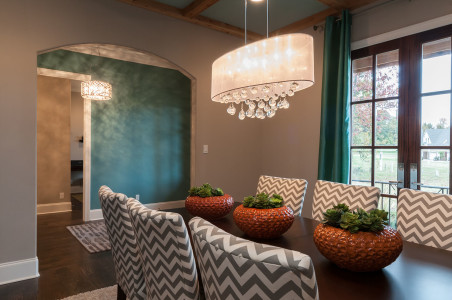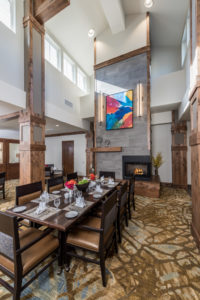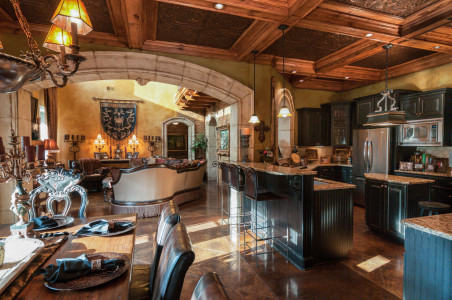Interior Photography

How (and why) to Hire a Professional Photographer
By Mike Boatman, Photographer
Interior photography – where do I begin?
The critical importance of photography for interior designers can’t be overstated. Interior designs are a form of intellectual property. A designer is selling intellectual talent and ideas of design, coupled with years of experience and training. This is also true with photography.
There are a lot of parallels between interior designers and photographers. We both sell intellectual property. There are incredible nuances in interior design as well as in photography. Interior designers and photographers alike can be generalists and/or specialists.
If I can be so blunt as to ask a question to the community of interior designers: What do you think about an untrained enthusiast, let’s say professional CPA or lawyer, doing their own interior design work? Even if they have natural talent they are grossly lacking in training, resources and experience. I’m certain that you have run into situations where the client absolutely loves some aspects of their interior design but only because they were ignorant of other options that you know, from your training and experience, would serve them immensely better.

I cringe when I see highly talented professional designers utilizing poor photography to represent their work. I equally cringe when I hear horror stories from designers who have hired generalist photographers to photograph architectural interiors. And please don’t even get me started about the iPhone! It takes great pictures in general for documentation, especially outside, and in some cases, acceptable pictures for interiors provided that the conditions for that particular photo are perfect for the parameters of the iPhone.
I recently had a designer tell me, “I took the same angle as you, but my image doesn’t look the same. It’s not as good as yours.” I replied, “Did you bring $100,000 in lighting equipment with you? I did.”
Here are a few key things to keep in mind:
If you’re trying to sell interior designs commercially, you’re probably talking to the architect, or at least to the general manager, who is talking to the architect of the new commercial building.
Architects have a pet peeve – “keystoning”.
Keystoning is when the vertical lines of the building are not vertical but are angling in or out at the top of the photograph. This is caused by the camera not being perfectly plum to the walls when the picture is taken. As a photographer, if I showed my portfolio to an architect and had a single image with keystoning, I would be immediately disqualified from working for that architect. They might be more forgiving with interior designers, but would still be irritated to see keystoning in your images.
Keystoning is just one nuance that architectural photographers understand very well. However, a generalist photographer may not be familiar with the issue, because it’s not a critical factor when they are photographing a wedding or a portrait.
Most specialist architectural interior photographers lease usage rights to their work. They do not sell their copyrights. Although prices are normally based off of some form of a day rate, day rates are dreadfully inaccurate for evaluating photographers. I’ve heard of day rates in the St. Louis area as high as $2500, and for that fee, the photographer would only deliver five to eight images. I’ve seen other rates as low as $45 per image delivered. Unfortunately, there is no real rhyme or reason behind pricing structures for the general population of photographers. Nor can you use pricing as a gauge for the quality of the photographer. Pricing is also greatly influenced by what geographic region you’re in.
Typically, higher quality architectural photographers will not allow distribution to a third party for any reason without prior written consent. This means you can’t submit the image to a magazine for use in an article nor could you submit the image in some form of contest. This can grossly handicap your marketing efforts.

Here’s how to go about hiring a photographer:
First, judge the work of the photographer by looking at their website and their marketing materials.
- If the photographer doesn’t have a website, that should be a red flag. Facebook is not a website.
- If the photographer specializes in weddings and portraits, they may not be qualified to photograph architectural interiors.
- If their website photos demonstrate technical flaws such as keystoning, photos out of focus, or grossly blown out sections of the photographs due to overexposure, then they will probably deliver technical flaws in your work as well.
Once you’ve picked two or three photographers whose work represents the quality that you want representing your work, the next step is to contact them by phone or email. If you get voicemail, leave a message. The time it takes them to respond to your message can indicate how responsive they are going to be to your needs going forward.
Here are the key questions to ask a potential photographer:
- What do you charge, and what do you base your charges on?
- What are the usage rights I get for these fees?
- How long am I allowed to use these images?
- On a typical room, how many images do you produce and how long does it take you?
- Do you charge for processing and light retouching, if needed?
- Are you lighting the rooms or using HDR?
- If I want to enter the images in design contests, will you sign a release to allow me to do that? Would this be included in the initial fee?
- If I want to submit these images to publications for editorial usage, will you sign a release to allow me to do that? Would this be included in the fee?
- Once you’ve done photography how long before I have images?
- Do you archive your images?
- Are you photographing in RAW?
- What format are the images delivered to me in? If JPEG, are you keeping the raw images in an archive system?
- Will you make multiple formats for me and if so, is there a fee for that?
- Do you charge for travel time to the location?
If the photographer wants to give you a per project price, that’s fine. A per project price would be for the photography time, processing, retouching, and formatting of the images delivered to you. All the questions would still be relevant. And it’s fair to ask the photographer what they anticipate their time on location will be. It is important to let your clients know how long you expect to be on their property.
By the time you’ve gone through this litany of questions with the photographer you’re going to have a very good idea whether or not this person’s going to be fun and comfortable to work with and if they are most concerned about your best interest, or their own.
I hope this information is helpful for you. My goal is to improve the overall quality of images that you use to represent your skill, talent, and training. Quality imagery doesn’t happen by chance. Sadly, you’ll never know the amount of money that you’re losing because of poor quality imagery simply because you don’t know who didn’t call.
There are no comments